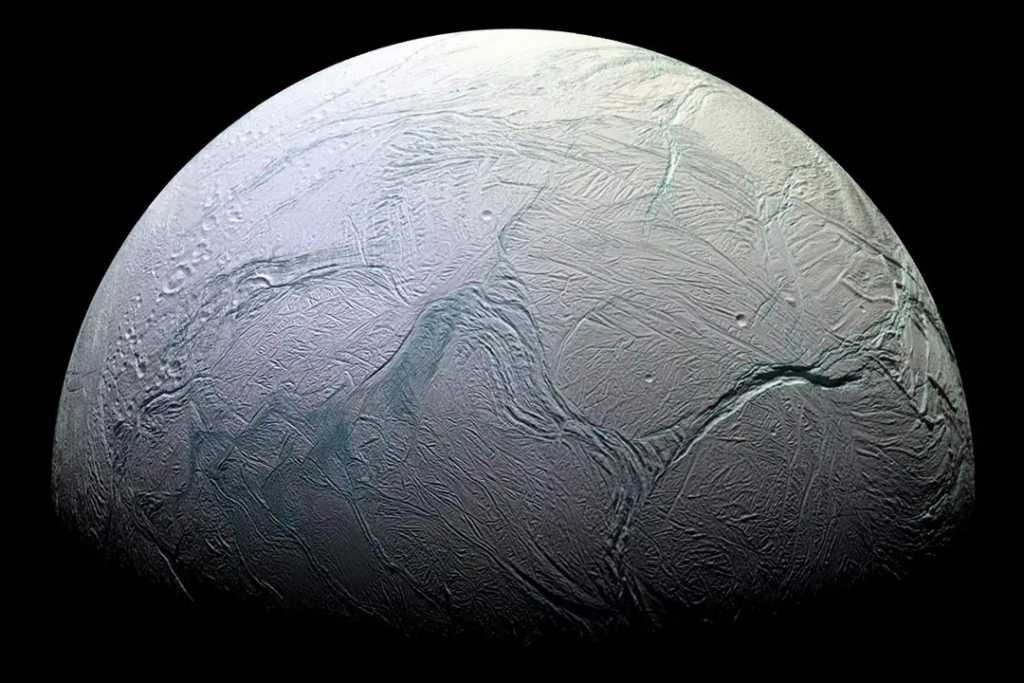Much of the United States is experiencing an unusually harsh winter, with entire cities snowed in. But that comes nowhere close to Saturn’s moon Enceladus. The moon is famous for its cryovolcanism, which blankets it in ice particles, but new research shows that the snow cover is much deeper than it should be.
Calculations suggest that the deposits of ice particles erupting from polar geysers may reach depths of up to 700 meters (about 2,300 feet) in some locations, which current eruptions cannot help us understand. These calculations are based on the sizes of a series of depressions known as tectonic pit chains.
According to a new study led by the physical research scientist Emily Martin of the National Air and Space Museum, the findings could imply that the frozen moon had far more active moments in its past.
Though only 500 kilometers (just over 300 miles) in diameter, Enceladus is the gleaming jewel in Saturn’s frozen crown. The moon is covered in a highly reflective shell of ice and contains a deep, liquid ocean of salty water begging to be explored for signs of life.
Enceladus’ frozen shell is regularly altered by tidal forces as a result of a tug-of-war between Saturn and the more distant moon Dione, to the point where cracks form in the thinner regions of the crust.
In the near vacuum, pressurized liquid water forces its way into these cracks, which expands and vaporizes, erupting into a supersonic blizzard of snap-frozen particles. A portion of this frozen ocean spray falls into orbit around Saturn, contributing to the planet’s magnificent rings. Heavier particles fall back to the moon’s surface, accumulating into drifts of what planetary scientists call regolith.
In 2017, US researchers published high-resolution images from the Cassini mission that they claimed showed geological formations called pit chains dotting Enceladus’ surface. After ruling out impacts and various other geological activities, planetary scientists concluded that the circular and elliptical pits formed as fractures in the crust beneath loose drifts of regolith extended and widened.
When applied to Enceladus’ craters, the formulae revealed snow thicknesses averaging around 250 meters, with some depths reaching 700 meters.
Considering the rate at which plumes of icy ocean water can deliver an adequate amount of snow, one way Enceladus could lay down enough snow in the past few billion years of the moon’s potential existence would be if the drifts were as fluffy and porous as possible.
Though not completely ruled out, the researchers believe the snow contains a mix of densities and porosities, leading them to consider the rate of snowfall had to have been much higher in the past. This also suggests that at some point during Enceladus’ history, the geysers may have been roaring, or there may have been more plumes spewing out frozen water vapor.
Meanwhile, a deeper insight into the evolution of Enceladus’ cryovolcanic activity offers a unique perspective on one of the Solar System’s most fascinating bodies.
This research was published in Icarus.

